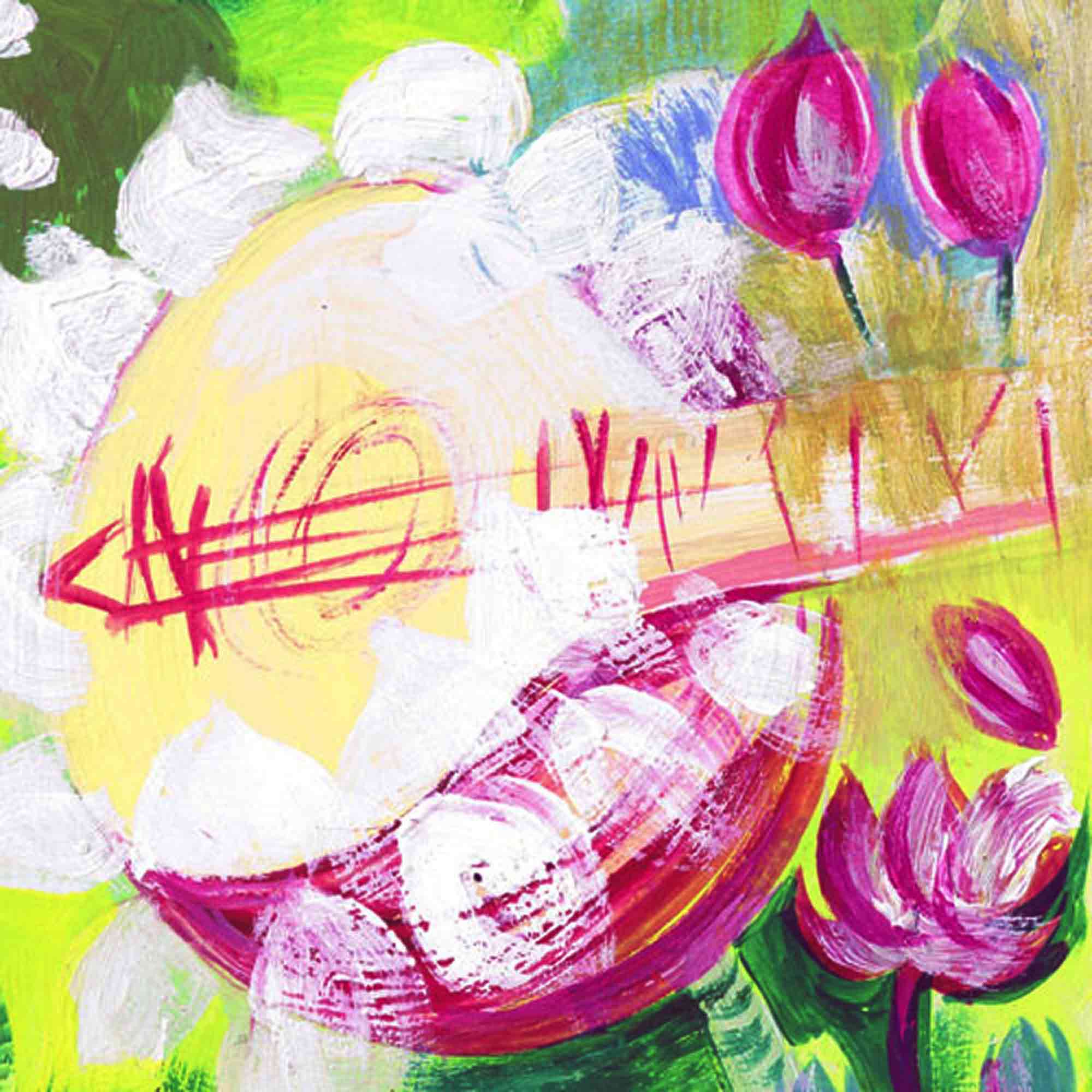Text: Ludwig Pesch | Art: Arun V.C.
The flute has played a key role in India’s artistic life since antiquity. This is evident from writings on dance-drama, mythology, sculptures and paintings. Its playing technique must have been highly developed for a very long time. Different names are used for it, for instance kuzhal (pronounced like “kulal” or “kural”) in Tamil speaking regions; and bānsurī in northern India. In poetry, song lyrics, classical dance items and films, words like venu and murali evoke its association with Krishna, the ‘dark skinned’ cowherd and flute player.
Early Tamil and Sanskrit poets describe the creation of the original bamboo flute. This did not even require any human intervention: it is an easily observed fact that bumble bees make holes in bamboo stems (Sanskrit vamsha) for their nests. These openings later invite the wind to create ever changing tunes in bamboo groves like those found in some parts of the Western Ghats. Here, and in the hills of North-East India, grow the varieties of bamboo preferred by flute makers.
The nest holes made by some insects have indeed the same size as the blowing and finger holes still seen in most bamboo flutes. Any human being living close to nature is bound to be inspired by such phenomena while making music, dancing or telling stories. As expressed in song lyrics, these sounds are remembered as enchanting experiences and therefore regarded as a gift from heaven. Listening to the nuances of bird song has further contributed to a musical symbiosis that emerges time again in different places. The symbolism associated with the seven notes – and also the rāgas derived from them – still echoes such deeply rooted sentiments.
It hardly surprises, therefore, that Pannalal Ghosh, the pioneer of Hindustani flute music, was influenced by “tribal” musicians belonging to the Santal people. Inspired by his music, other flautists sought to develop styles that probe into our bonds with the natural world, something greater and more sublime. This greater “something” most of us seem to be aware of to the extent of longing for it, “naturally” associating it with impressions from our early childhood, and later reminded of these by any encounter with “beauty” even as modern lifestyles prevent us from realizing its essence on a daily basis:
By plucking her petals, you do not gather the beauty of the flower. – Rabindrath Tagore whose My Boyhood Days includes an anecdote on his attempt at making coloured ink from flower petals which “merely turned to mud” (Ch. XI)
With this dilemma we are in good company: Rabindranath Tagore (1861-1941), India’s first Nobel laureate, who established his Santiniketan school and Viswa-Bharati University on and amidst the Santal villages of West Bengal.
Far from being bogged down by the fact that “the superconscious self of mine which has its expression in beauty is beyond my control”, he compared the Infinite Being to a flute player whose ‘music of beauty and love helps us to transcend our egotistic preoccupations’.*
Very often I think and feel that I am like a flute – the flute that cannot talk but when the breath is upon it, can sing. – From a letter to his Dutch translator, the writer Frederik van Eeden (signed in London, 9 August 1913)
Ludwig Pesch specialized in the Carnatic bamboo flute under the guidance of H. Ramachandra Shastry (1906-1992) whom he accompanied on many occasions.

At the invitation of Smt. Rukmini Devi-Arundale, a gurukulavāsa type of personalized apprenticeship became possible thanks to Kalakshetra College (today known as Rukmini Devi College Of Fine Arts), the “institution of national importance” inspired by Rabindranath Tagore: it was his pioneering institution, Santiniketan, that provided a model for the revival of South Indian performing and visual arts just as related crafts.

image by L. Pesch
For Rabindranath, who was essentially a poet and artist, the realization and the expression of beauty was the supreme objective in human life. His concept of beauty, according to true Indian tradition, was inseparably connected with truth and goodness. Whatever is true and noble in life, nature and art is also beautiful. Thus, aesthetic sensitiveness, in the true sense, is a fundamental aspect of spiritual education. A proper aesthetic culture should also include the perception and expression of the beautiful in human life and social conduct, as well as in art and literature. Rabindranath stated in no uncertain terms that man’s sensory encounter with the environment was as important as his mind’s enquiry into its inner mystery, and any worthwhile society should provide for both.
Source: The Santiniketan Aesthetic in Unesco’s “World Heritage List Nominations”
https://whc.unesco.org/en/tentativelists/5495/
(accessed 9 June 2020)
“Whatever is true and noble in life, nature and art is also beautiful“

Book recommendation: Pidhana – The Canopy of Life
Tagore’s ideal of uniting practical, academic, artistic and spiritual education amounts to “lifelong education” and “ecology” in the most modern and comprehensive sense, namely in harmony with nature. Kalakshetra’s unique ecology, like Santiniketan, was painstakingly created from a barren stretch of land, over a period of several decades. This process and the unique environment resulting from it are documented in a beautiful book titled Pidhana – The Canopy of Life (Chennai, 2014, ISBN: 978-81-921627-3-7): richly illustrated, this publication tells the story of the trees found in the 99acre campus of Kalakshetra Foundation.

